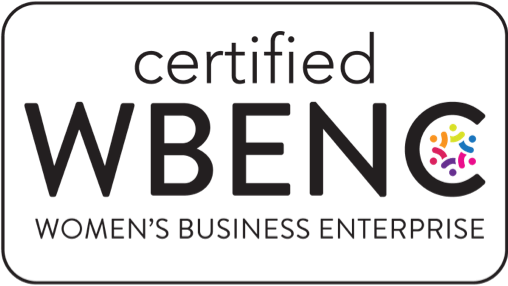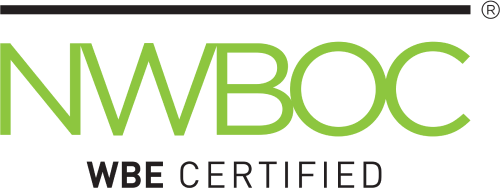Report
Aligning technology with workforce needs for maximum impact

Table of contents
Related services and insights
Technology enablementAccording to Eagle Hill Consulting’s 2025 Tech Enablement Survey, despite widespread use of workplace technology among employees, companies are falling short of unlocking tech’s full potential.
Eagle Hill believes that organizations can maximize their technology investments by adopting a people-centric approach. Understanding employees’ needs early on helps reengineer business processes and fully leverage automation. This strategy unlocks additional efficiencies, allowing employees to focus on critical tasks, which is essential for success in today’s innovation-driven economy.
Employees want the tools to work smarter, but aren’t getting them
Our survey of U.S. workers finds that the workforce sees the value of technology in the workplace. Seventy-nine percent of employees say they use technology in their day-to-day work, and 69% say it makes their job easier. Employees are also eager to harness technology that can automate repetitive, low-value-add tasks and free up their time for higher-value activities. In fact, 64% of respondents believe that the automation of repetitive tasks would improve their productivity.
Yet only 38% report that automation has eliminated tedious aspects of their job in the last year. Employees are being met with friction—41% of employees say their organization is not prepared for increasing automation trends at large. What’s more, only 20% of employees report that their organization has made improvements to automate repetitive tasks in the last year.
Automation could be a game-changer in improving productivity, streamlining operations, and enhancing employee morale, but organizations are leaving efficiency gains on the table by underutilizing opportunities to automate.
Technology in the workplace: success hinges on process, not just tools
The promise of technology enabling smarter ways of working isn’t being actualized. When technologies are deployed, they are often not supported with processes that are designed or engineered to drive successful implementation. When organizations roll out new technologies, only 47% of employees report that they are accompanied by corresponding new processes.
For technology to deliver real results, organizations must map and reengineer the business processes that surround it. Consider this: when new processes are rolled out in conjunction with new technology, workers are more than twice as likely to report that the technology enables them to work more quickly, to more easily access information they need to do their jobs, and to improve the quality of their work.
Organizations are failing to realize the full value of technology when they implement it without mapping and reengineering the business processes that surround it.
The gap between technology’s potential and on-the-ground impact is vast
The data reveal a deeper issue: the fundamental misalignment between the intent of technology and its real-world execution. The introduction of new or improved technology is often mismatched with actual employee needs, and the intended benefits are not broadly realized.
According to the survey, when technology improvements are deployed, employees report the top benefits include helping employees access information faster (33%), completing tasks more quickly (32%) and improving work quality (28%). But employees are looking for more.
Thirty-nine percent reported still being burdened by manual data entry, 43% struggle to access information because it’s scattered across multiple systems, and 40% find it challenging to access those systems. In some cases, their organization’s introduction of new technology has made work harder: 17% of employees say new technology has made their job more difficult.
Employees feel burdened and frustrated, despite technology’s intent to speed and ease work
Employees find it burdensome to:

Enter or track
information into systems

Access different
systems

Find information
across different systems
Source: 2025 Eagle Hill Consulting Technology Enablement Survey
Leaning into automation has the potential to resolve these friction points, but only if organizations can identify pain points and introduce the right tools to address them.
Don’t leave experience behind when adopting technology in the workplace
As companies work to determine what tools the business and employees need, they should understand the differences in attitudes across generations that may impact implementation.
The generational divide in tech adoption is stark and potentially costly. Older employees are less likely to find workplace technology intuitive and more likely to be underserved during tech transitions. Only 56% of employees aged 58 and older say that technology makes their jobs easier—13 percentage points lower than the broader workforce. Even more concerning: 43% of employees aged 58 and older say they receive inadequate support during tech rollouts, a full 10 percentage points higher than the general workforce.
This isn’t just a support gap—it’s a strategic risk. Seasoned employees hold critical institutional knowledge, mentor junior staff, and anchor team stability. Failing to account for their needs during digital transitions can erode not only productivity and morale, but also culture, continuity, and retention. Smart organizations take the time to understand what makes workflows easier for each generation—and design enablement strategies that bring everyone along.
AI and workplace technology: Considerations in a changing environment
Meanwhile, AI is rapidly advancing, but many organizations aren’t enabling their workforce to keep pace. According to Eagle Hill data, 67% of employees aren’t using AI at work—but more than half of those non-users want to learn. Meanwhile, 41% of employees say their organization isn’t prepared for the rise of AI. This signals a growing disconnect between employee interest and organizational enablement. Employees are eager to explore AI’s potential, but they aren’t equipped with the tools, training, or support to do so.
Consider this: in workplaces where employees spend countless hours searching for information, AI-supported search tools could transform how work gets done—surfacing direct answers instead of long lists of links. But realizing that promise depends on more than the tech itself. It requires understanding the pain points employees face and matching them with AI solutions designed to relieve the load.
The Fix: Bridge the enablement gap with a people-centric strategy
Employees are eager to harness the power of technology, automation, and AI—but success hinges on more than just tool adoption or basic training. To close the gap between promise and performance, organizations must take bold, people-centered actions that align technology in the workplace with real-world workflows. Here’s how to get it right:

Build your tech strategy around your people. Align technology investments with business needs for maximum ROI. Using your business goals as the compass, define future goals, develop actionable roadmaps, and map and reengineer business processes with the employee experience in mind. The real risk to not maximizing your technology investment is in not seeing improvements in productivity and morale because of misaligned solutions that don’t address actual pain points.

Make automation a bottom-up initiative. Effective automation starts with understanding real employee pain points. Involve employees early in identifying, mapping, and prioritizing opportunities for automation. Their insight into daily workflow friction is invaluable and engaging them in the process builds buy-in, fosters ownership, and leads to better outcomes. When automation is positioned as a solution with employees, not just for them, adoption rises and resistance falls.

Engineer your processes to match the tech. Technology alone won’t deliver impact without the right operational scaffolding. Every tech investment should be accompanied by redesigned or reengineered processes that support its use. When workflows are documented and optimized alongside new tools, employees are more than twice as likely to report improvements in speed, access, and work quality. Process design is the missing link between tech capability and meaningful results.

Lead tech adoption as a full-enterprise transformation. Successful tech implementations require successful deployment and organizational transformation. That means involving cross-functional teams to rethink processes, aligning leadership, and fostering a culture that embraces change. Training is part of the equation, but so is redefining workflows, setting clear performance expectations, and ensuring employees understand why the change matters.

Mobilize automation ambassadors to scale success. Peer learning is a powerful tool, but organizations would be wise to embed it in a larger strategy of change ownership. Identify early adopters across departments and empower them not just as trainers but as champions of automation. These ambassadors can help bridge the gap between leadership and frontline staff, offer real-time feedback, and help shape how automation is implemented on the ground.
Workplace technology: the bottom line for productivity and morale
Employees are eager for new technologies, automation and even AI, but enthusiasm alone is not enough to take organizations to the next level of productivity. Without thoughtful implementation based on existing workflows and pain points, organizations risk missing the mark in improving both productivity and morale.
Success in automation is not about deploying the newest tool; it’s about designing change around the people expected to use it. That means aligning solutions with how employees actually work, communicating the “why” behind new technologies, and delivering support that’s practical, timely, and empowering.
If organizations get it right, automation has the power not only to drive efficiency but also to strengthen culture, deepen engagement, and build a workforce ready for what’s next.
Methodology
These findings are based upon the Eagle Hill Consulting Technology Enablement Survey conducted by Ipsos in May 2025. The survey included 1,436 respondents from a random sample of employees across the U.S. plus an augment of government employees. Respondents were polled about their views about working with technology.

